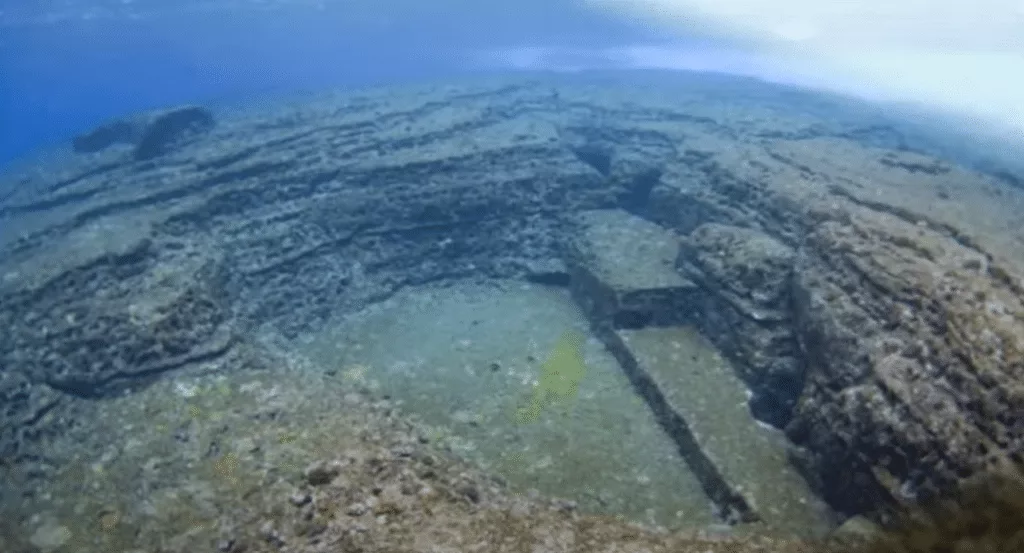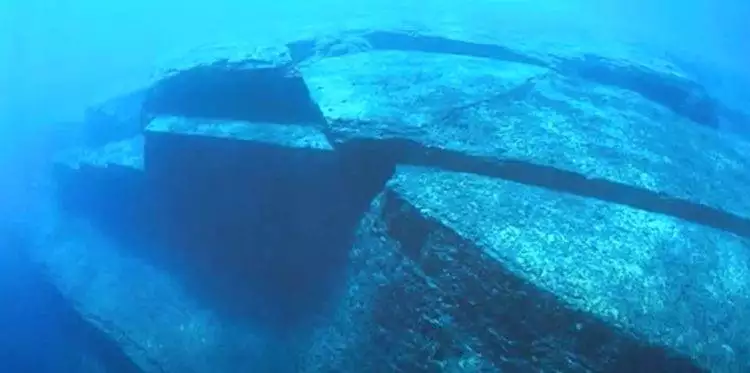The Yonaguni Monument is a pyramid-like structure located 25 meters underwater in Japan. Scientists say this structure could be more than 10,000 years old and thus rewrite the history of archeology.
The structure is located by a Japanese island
The Yonaguni Monument got its name by being located next to a Japanese island with the same name. It was first discovered back in 1987 by a local diver.
The diver Kihachiro Aratake accidently stumbled upon the structure in a moment of ‘pure coincidence’.
He had previously spoken about it
Speaking with the BBC, Aratake shared the major discovery he underwent by accident, saying, “I was very emotional when I found it.”
“Upon discovering it, I realized that this would become a treasure of Yonaguni island. I kept it a secret. I didn’t tell anyone on my staff.”
But it didn’t stay a secret for long

The secret was out after a team of scientists swooped in to start investigating the newly-discovered structure at the time.
The Yonaguni Monument is believed by some to date back around 10,000 years ago, which is extraordinary given that some experts say it appears to be man-made.
It predates the Egyptian pyramids
The pyramid-like structure seems to be man-made and has what looks like stairs and flat terraces.
The Yonaguni Monument which is also referred to as ‘Japan’s Atlantis’ could be rewriting history as people say it predates the Egyptian pyramids and Stonehenge.
Stonehenge is believed to be 5000 years old
The Egyptian pyramids are believed to date back around 4,500 years. And according to English Heritage, Stonehenge was built around 5,000 years ago.
So for the Yonaguni Monument to be over 10,000 and possibly man-made is seriously impressive.
But archaeologists are skeptical
While the discovery is impressive, archaeologists are struggling to agree on the age of the Yonaguni Monument and are still trying to unanimously agree on whether it was actually man-made.
On an episode of The Joe Rogan Experience last year, Graham Hancock and archeologist Flint Dibble had a debate on the matter.
They disagreed on the age and nature of the structure

Dibble said at the time, “I’ve seen a lot of crazy natural stuff and I see nothing here that to me reminds me of human architecture.”
Hancock then responded, “To me, Flint, it’s stunning that you see that as a totally natural thing, but I guess we’ve just got very different eyes.”
Hancock further explained his perspective

According to the New York Post, Hancock added, “If this really was built by a mysterious civilization more than 10,000 years ago, it would place Yonaguni in the same league as Göbekli Tepe in Turkey – one of the oldest known man-made structures, dated to around 9500 BC.”
Hancock doesn’t believe the monument was man-made, and marine geologist Masaaki Kimura agrees.
Kimura had initially thought it was natural
Although he doesn’t think the monument is man-made, Kimura had initially thought so. He also believes it’s only 6,000 years old.
As per National Geographic, Kimura said, “I think it’s very difficult to explain away their origin as being purely natural, because of the vast amount of evidence of man’s influence on the structures.”
So we might not be sure if the Yonaguni Monument is natural or man-made or exactly agree on how old it is, but it sure is a cool discovery.
















































